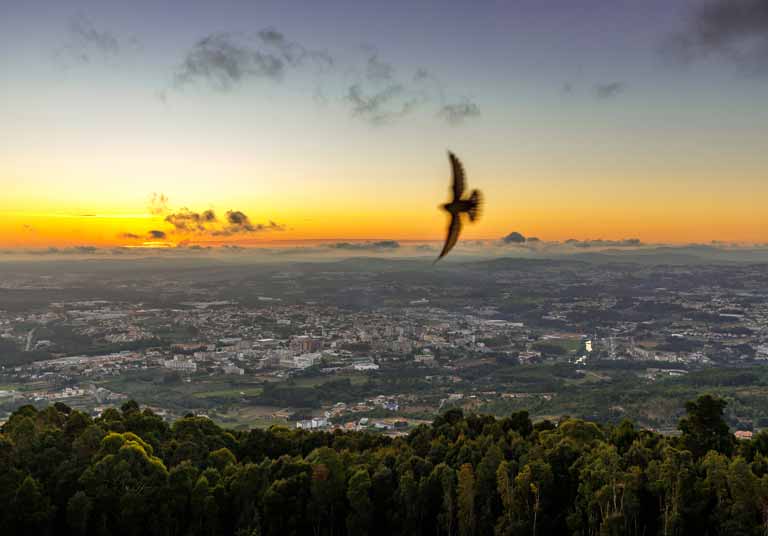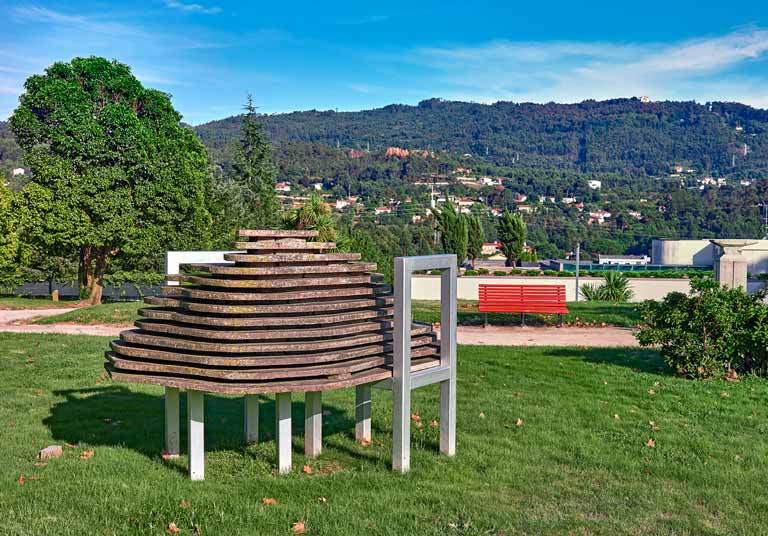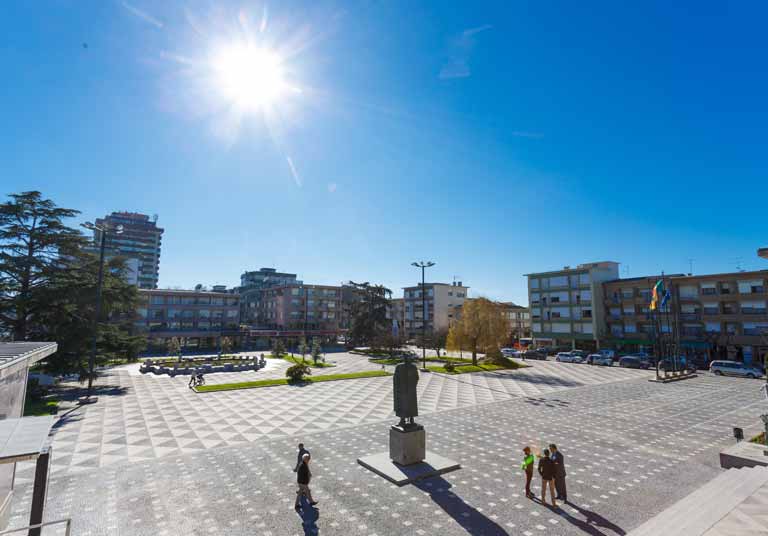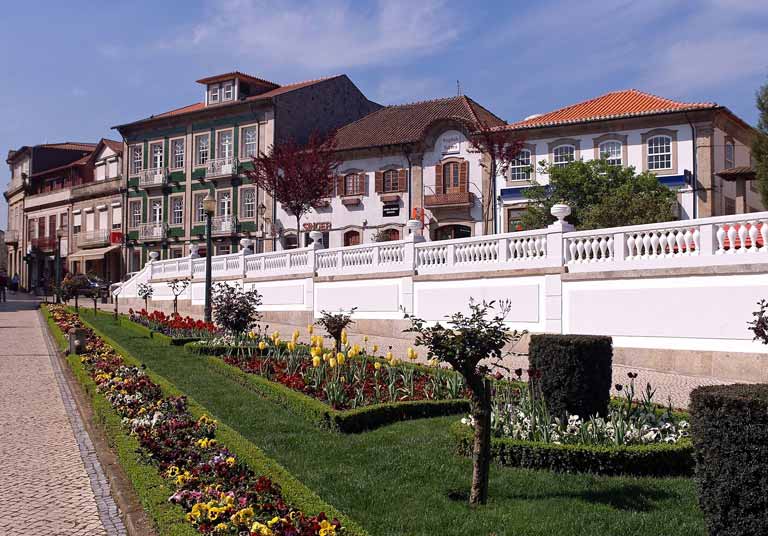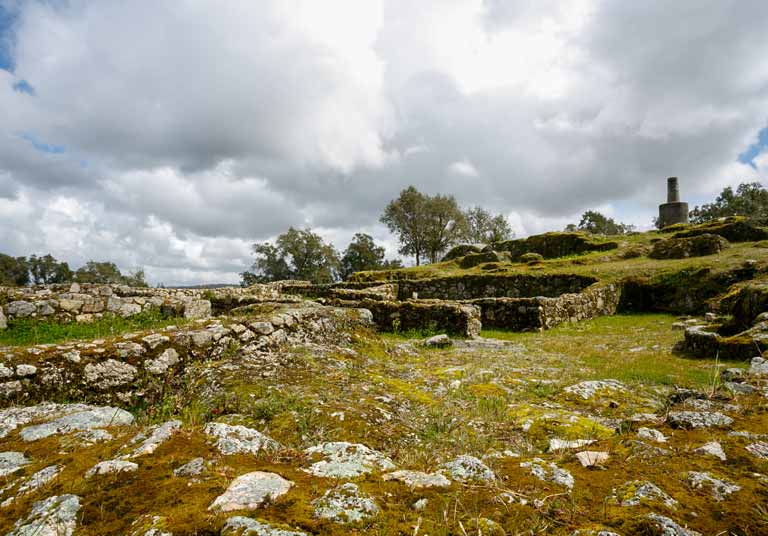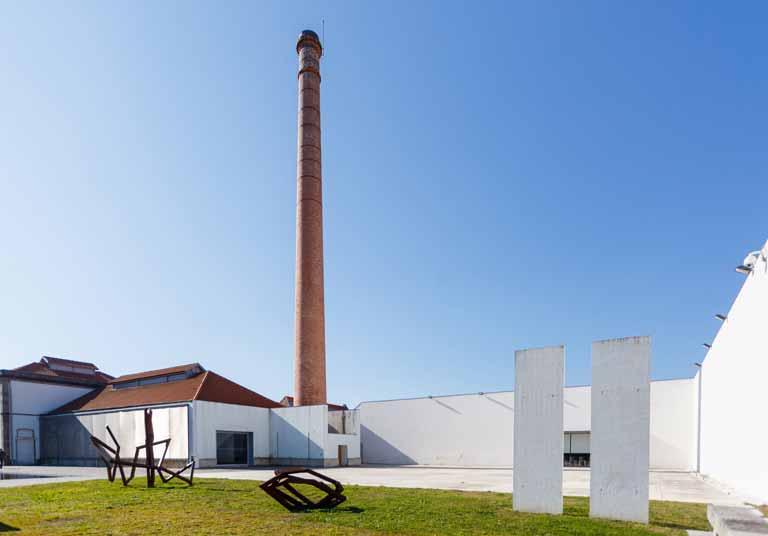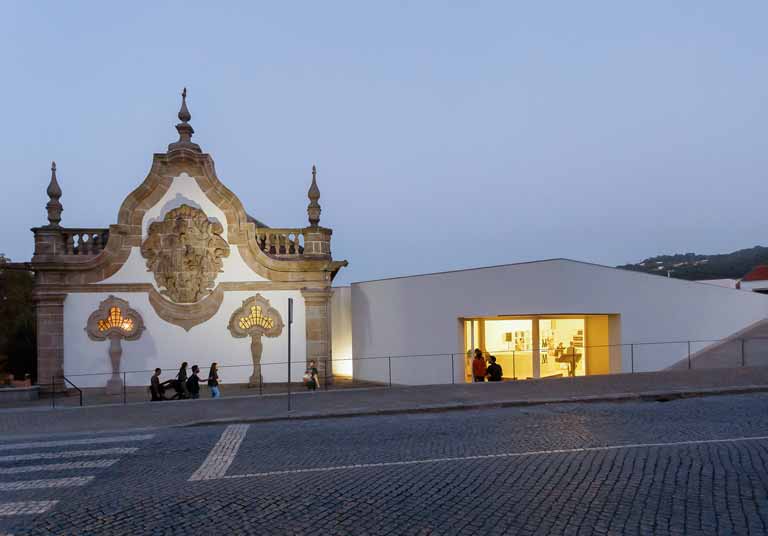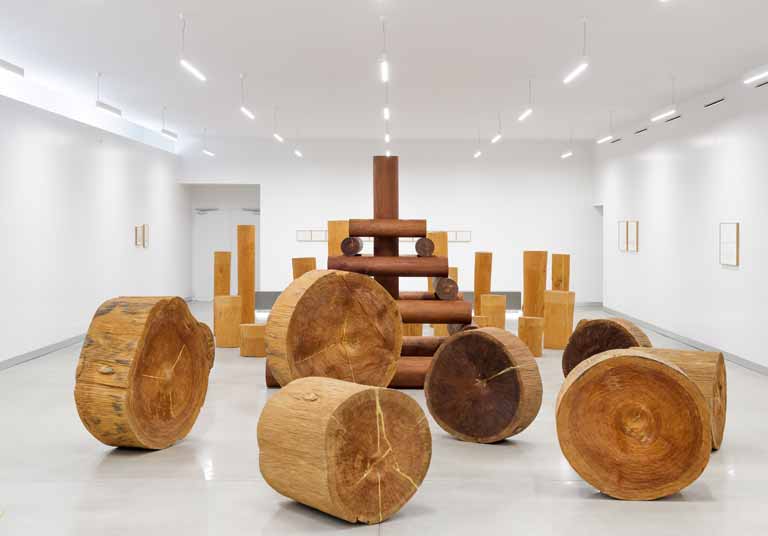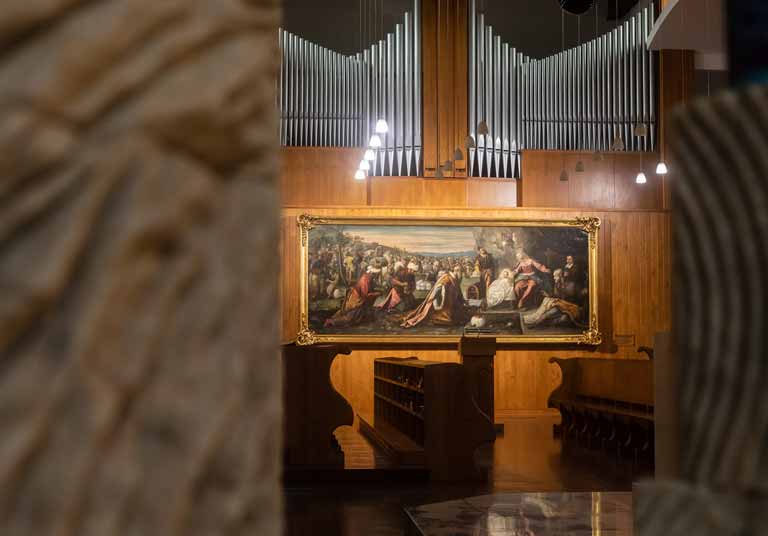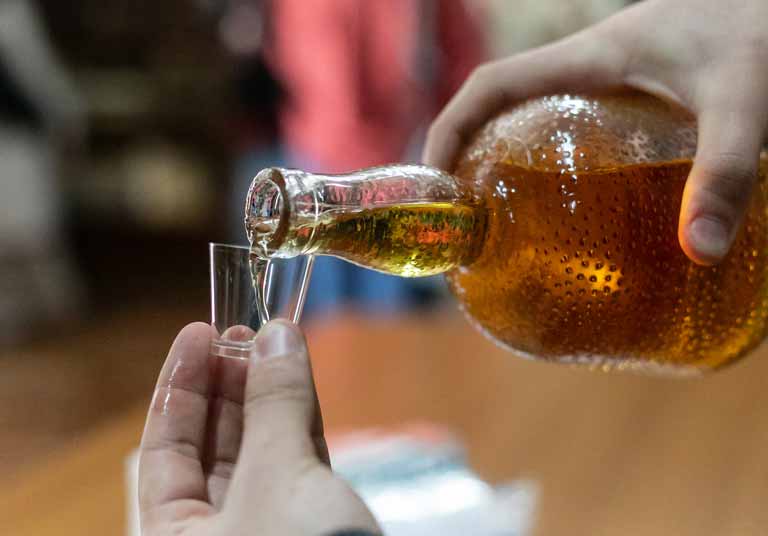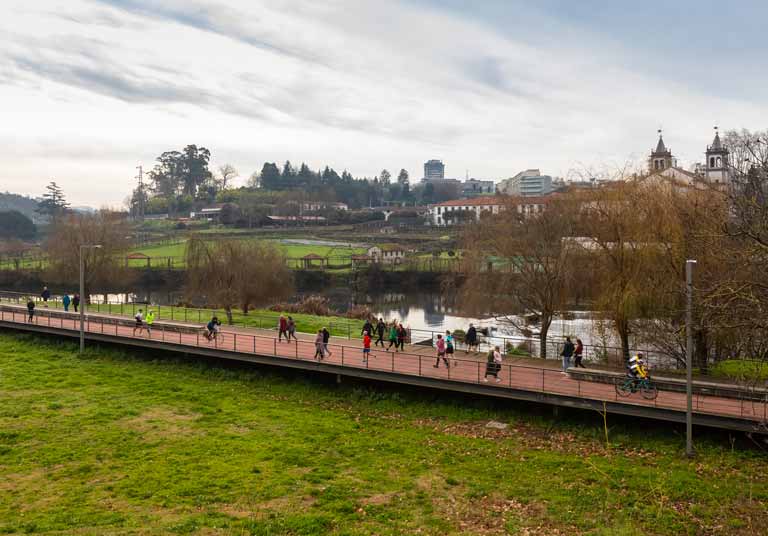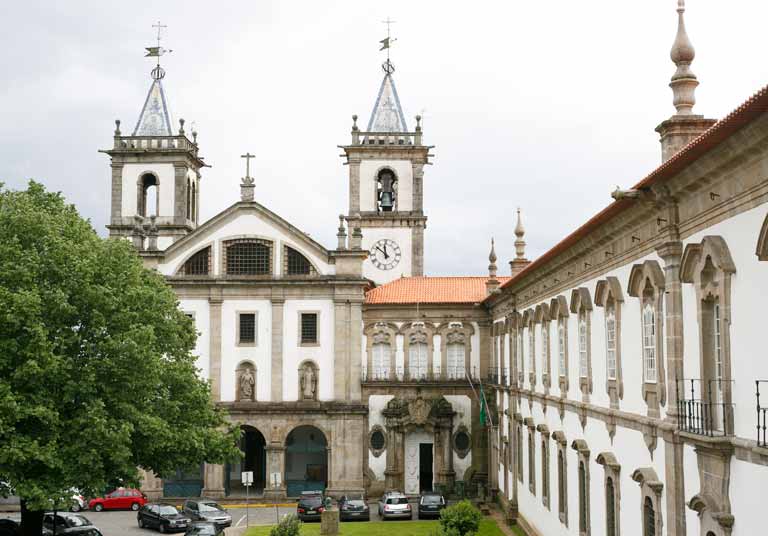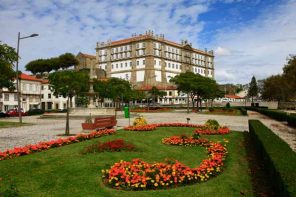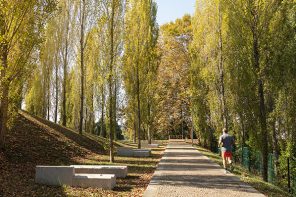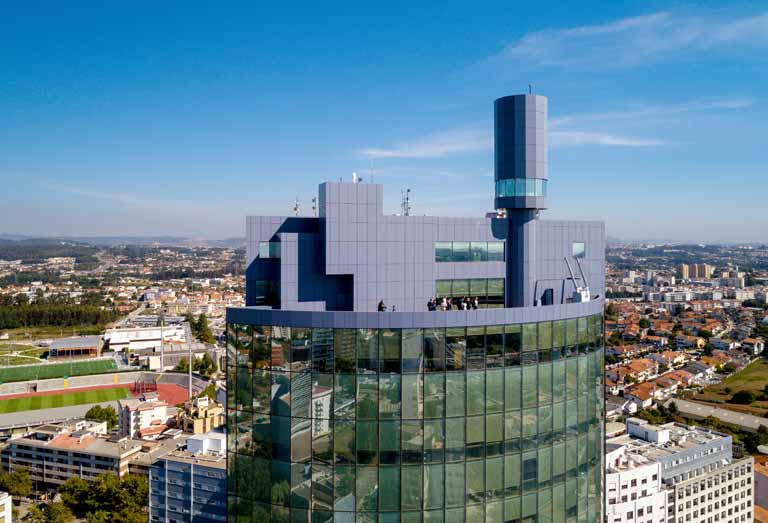THE CITY OF SCULPTURE, SANTO TIRSO IS THE EPICENTRE OF SEVERAL EXPERIENCES, FROM THE IMPONENT LANDSCAPES SCULPTED BY TIME TO THE BEST EXAMPLES OF CONTEMPORARY ARCHITECTURE.
A quarter of an hour away from the main urban centres of the Northwest of Portugal, Santo Tirso is the real fifteen-minutes city. However, more than its access, this true capital of contemporary sculpture results from the fusion of centuries of history with innovation and audacity, that turn Santo Tirso not only into a great place to live but also a must-see territory to understand the essence of the region.
Designed by nature, the landscape of Santo Tirso has been inhabited for thousands of years, as it can be proved by the successive occupations of Castro do Monte Padrão (Monte Padrão Roman Settlement). This history-full complex may be visited, providing a real time travel. The history can be attested at Centro Interpretativo do Monte Padrão (Monte Padrão Interpretative Centre), open to the public in April 2008. It forms the cornerstone of the project of study, musealization and promotion of the archaeological station, with the purpose of providing assets of educational and museology nature, and support to the research work.
The territory’s potential has always been known over the years, having appeared here the auspices of the industrialization of Vale do Ave, in an industrial cluster, bustling even nowadays, having also left impressive heritage marks – which can be visited nowadays at Centro Interpretativo da Fábrica de Santo Thyrso (Santo Thyrso Factory Interpretative Space), a place of tribute and history of an entire region.
In the Factory, a real multi-purpose meeting point of the municipality, there are also clear marks that modernity and the past keep on complementing in a territory in constant evolution. The re-qualification of the old industrial buildings, now transformed into spaces dedicated to culture, research and entrepreneurship, fully respect the original architectural languages.
But it is in visual grammar that Santo Tirso keeps on shining – as a fashion and creative industry centre, but also as the city of sculpture, a huge open-air museum whose collection, of the world most acclaimed artists, exhibits contemporary sculptures all around the territory.
The museum project is focused on Museu Internacional de Escultura Contemporânea – MIEC (International Museum of Contemporary Sculpture), whose head-office, next to the Monastery of São Bento, is one of the most powerful examples of architecture by two Portuguese Pritzkers: Álvaro Siza Vieira and Eduardo Souto Moura. The re-qualification of the convent inns of the Benedictine Monastery, which concentrates the collection of Museu Municipal Abade Pedrosa (Abade Pedrosa Municipal Museum), and the construction of the body of MIEC’s building, placing Santo Tirso in the stage of great architecture, with spaces that are worthwhile visiting.
Santo Tirso is better explored in this fusion between the past and the visions of the future, either in the urban centres or in the communities spread around the landscape. In Roriz, for instance, the green fields encourage spiritual meetings, in monasteries like the one of Santa Escolástica or Singeverga – where faith also meets gastronomy, providing Santo Tirso with relevant icons like the cloister specialties of Santa Escolástica or the mystical Liqueur of Singeverga.
But the multiple layers of Santo Tirso might be better summarized in another guilty pleasure: the famous jesuit cakes. The fine puff pastry, protected by a sugar cover, is still nowadays the embassy of sensations from Santo Tirso.
Like this original pastry that can be found in several bakery and pastry shops of the city, Santo Tirso is a long succession of places: the rural one, the forest, the industrial, the spiritual, the cultural. From the city to the civil parishes, this unique territory keeps on attracting for long walks, across trails or farms, around factories or museums – always welcomed by a community that, for thousands of years, is proud of their territory and culture.

